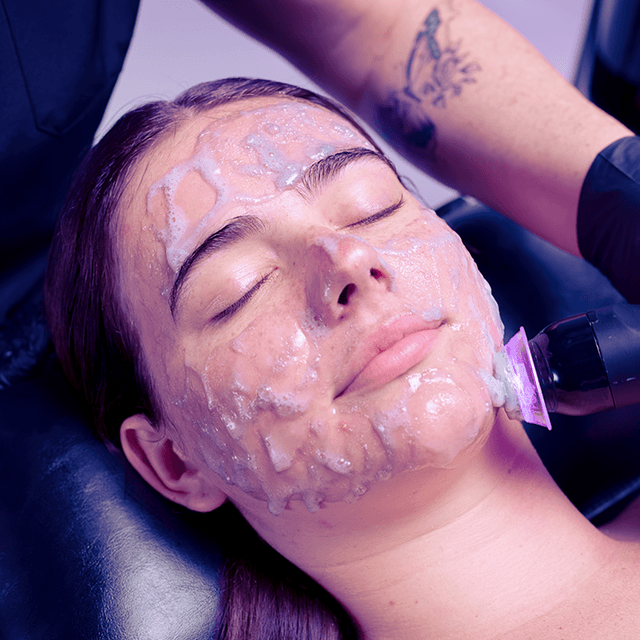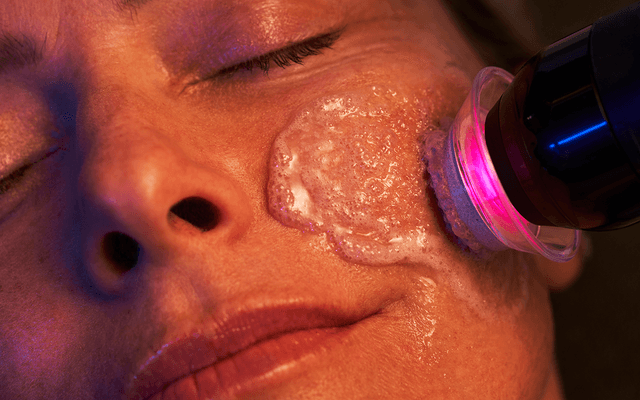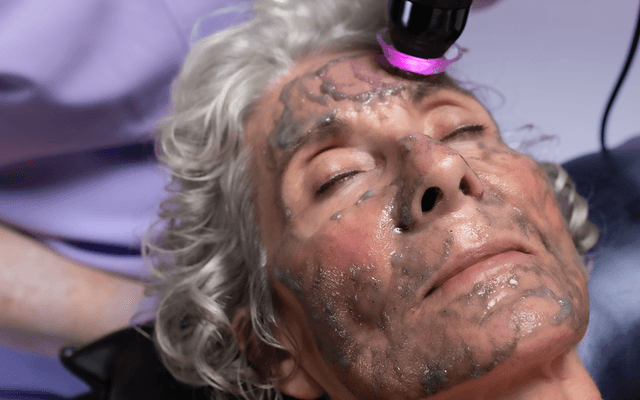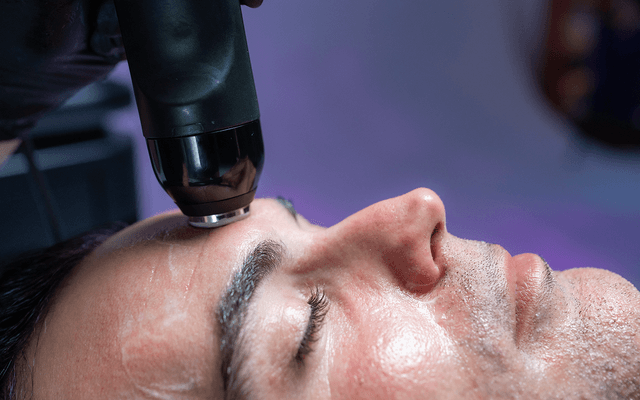But as we age, this natural renewal process slows down. Instead of turning over every 28 days (like it does in your 20s), it can take 40 days or more. That means dullness, fine lines, and slower healing from breakouts or sun damage.
You can regenerate skin faster by giving it the right support. Whether you’re looking to stimulate collagen, speed up recovery after treatments, or simply keep your complexion smooth and glowing, here’s how to do it.
1. Understand What Affects Skin Regeneration
If you want to boost skin healing, it helps to know what slows it down.
Aging and Collagen Loss: Collagen production naturally drops ~1% per year after 30, which makes skin thinner and slower to repair.
Environmental Damage: Sun exposure, pollution, and harsh products trigger inflammation that damages skin cells.
A Weak Skin Barrier: If your barrier is dry or compromised, your skin can’t hold on to hydration or nutrients needed for renewal.
The first step to faster regeneration? Protect your skin from these stressors so it can focus on repairing itself.
2. Support Skin Regeneration From the Inside Out
You can’t just rely on creams—your skin needs the right building blocks to heal.
Eat Regenerative Nutrients: Focus on foods rich in vitamin C, zinc, and omega-3 fatty acids. These help repair tissue, support collagen production, and reduce inflammation.
Great options: salmon, walnuts, citrus fruits, and leafy greens.
Hydrate (Smartly): Drink plenty of water, but also eat hydration-rich foods like cucumbers or bone broth, which help plump up the skin from within.
Get Quality Sleep: Your body releases growth hormones during deep sleep, which helps repair and regenerate skin cells. Aim for 7–9 hours of uninterrupted sleep.
3. Train Your Skin Like a Muscle
Think of skin like a muscle—it responds to stimulation. The goal is to create controlled renewal, not damage.
Gentle Exfoliation: Use mild chemical exfoliants like lactic acid or mandelic acid 1–2 times a week to remove dead cells without stripping the barrier.
Active Ingredients That Work: Retinoids, peptides, and growth-factor serums help stimulate collagen and improve skin texture over time. Start slow to avoid irritation.
Professional Regenerative Treatments: Treatments like microneedling and radio frequency (RF) heat create tiny, controlled injuries that signal your skin to produce new collagen and elastin.
4. Boost Oxygen and Circulation
Your skin can’t regenerate if it doesn’t get enough oxygen and nutrients. Improving blood flow can make a huge difference.
Facial Massage: A few minutes of daily facial massage or lymphatic drainage helps move toxins out and brings nutrient-rich blood to the surface.
Oxygenating Treatments: Professional facials that trigger a “CO2-Bohr effect” (like oxygen facials or Glo₂Facial) help your skin absorb more oxygen, speeding up the repair process.
Move Your Body: Even a brisk walk boosts circulation, which can help skin look brighter and heal faster.
5. Follow the Skin Healing Cycle
Your skin heals in a predictable rhythm, and working with that cycle gives better results than rushing it.
Phase 1: Inflammation (1–3 Days) – Your body signals healing to start.
Phase 2: Proliferation (4–14 Days) – Fibroblasts make new collagen and skin cells.
Phase 3: Remodeling (3–6 Weeks) – Collagen strengthens, skin texture smooths.
If you’re getting professional treatments, space them 4–6 weeks apart to allow your skin to complete this cycle before stimulating it again.
6. Try Professional Treatments That Work
If you’re serious about regenerating skin faster, some in-office treatments are worth considering.
Radio Frequency (RF) Skin Firming: RF heats the deeper dermal layers to kick-start collagen production, firming skin over time.
Microneedling (With or Without PRP): Creates tiny punctures that activate your body’s wound-healing process, improving scars, fine lines, and skin tone.
Combination Therapies: Pairing oxygenating facials with RF or microneedling can prep the skin, improve product absorption, and maximize regeneration.
7. Be Consistent (Not Aggressive)
The biggest mistake people make? Overdoing it. Your skin thrives on consistency, not constant stress.
Daily SPF: Sun exposure slows regeneration dramatically, so wear at least SPF 30 every day.
Moisturize and Strengthen Your Barrier: Look for ceramides, niacinamide, and hyaluronic acid to keep your skin barrier healthy.
Stay Patient: Faster regeneration doesn’t mean overnight changes. The goal is to teach your skin to heal better over time.
What Does Healthy, Regenerating Skin Look Like?
When your skin is renewing itself properly, it will feel smoother, look plumper, and show fewer fine lines and dark spots. Even acne scars and uneven texture will soften as collagen rebuilds.
Troubleshooting: When Your Skin Isn't Responding
Even with the best approach, skin regeneration doesn't always go smoothly. Here's how to identify problems and course-correct quickly.
Signs You Need to Adjust
Skin is getting worse: Increased breakouts, irritation, or sensitivity after 2-3 weeks means you're overdoing it. Scale back actives and focus on barrier repair.
No changes after 6-8 weeks: You should see subtle improvements within two months. If nothing has changed, your routine may be too gentle or you need professional help.
Results plateau: Normal around month 3. Your skin has adapted and needs either a break or different stimulation.
The Biggest Mistakes
Over-exfoliating: Multiple acids or daily exfoliation strips your barrier faster than it rebuilds. Signs: persistent redness, stinging, or tight skin even after moisturizing.
Mixing incompatible ingredients: Retinoids + vitamin C together, or layering multiple acids neutralizes benefits. Alternate on different days instead.
Skipping basics: Advanced treatments won't work if you're not using SPF and proper moisturizer consistently.
For Sensitive Skin
Start with 4-6 weeks of barrier repair (gentle cleanser, ceramides, SPF) before any actives. Try the "sandwich method"—apply actives between moisturizer layers. Use gentler alternatives: mandelic acid over glycolic, bakuchiol over retinol.
When to See a Professional
Stop and consult a dermatologist if you experience persistent burning, new dark spots, skin that feels hot, severe dryness that won't improve, or allergic reactions. Some adjustment is normal, but your skin should never feel damaged.
The Bottom Line: Support, Stimulate, Protect
The best way to regenerate skin faster is to work with your body’s natural healing process.
Support it with good nutrition and sleep.
Stimulate it with smart actives and professional treatments.
Protect it daily with SPF and a strong barrier.
With the right approach, you can help your skin act years younger—repairing damage faster, holding on to hydration better, and keeping that fresh, healthy glow.
Want to See Professional Regeneration in Action?
Professional regenerative facials, like Glo₂Facial’s 4-step protocol, combine oxygenation, radio frequency, and targeted serums to help rebuild skin health, boost collagen, and improve texture.





















